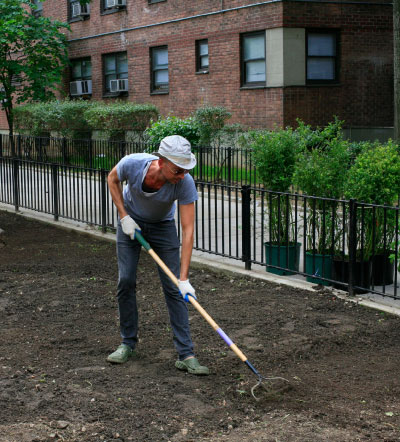
Portrait of Fritz Haeg by Oto Gillen. All images are courtesy of Distributed Art Publishers, Inc.
Last month saw the release by Metropolis Books of the greatly expanded second edition of Edible Estates, which documents the eight regional prototype food gardens that Haeg designed and planted in California, Kansas, Texas, Maryland, New Jersey, New York, and England. Alongside countrywide reports from individuals who have planted their own edible gardens, the book features essays by edible-landscaping pioneer Rosalind Creasy, artist and writer Lesley Stern, and bestselling author Michael Pollan. Other highlights include Haeg’s thoughts on Michelle Obama’s vegetable garden on the White House lawn and the never-before-published Declaration of the Good Food Revolution by MacArthur Fellow and urban farmer Will Allen.
As Eva Hagberg of Architectural Record writes, this book “is not an attack on the front lawn. It is an attack on our sanctificiation of the idea of sameness.” A chimeric mash-up between how-to book, garden showcase, and landscaping manifesto, the second edition of Edible Estates: Attack on the Front Lawn teaches and inspires readers to see their urban landscape with new eyes, and to understand the ways in which private property can become a public model for social change.




 Facebook
Facebook Permalink
Permalink Digg
Digg Reddit
Reddit LinkedIn
LinkedIn StumbleUpon
StumbleUpon Tumblr
Tumblr

